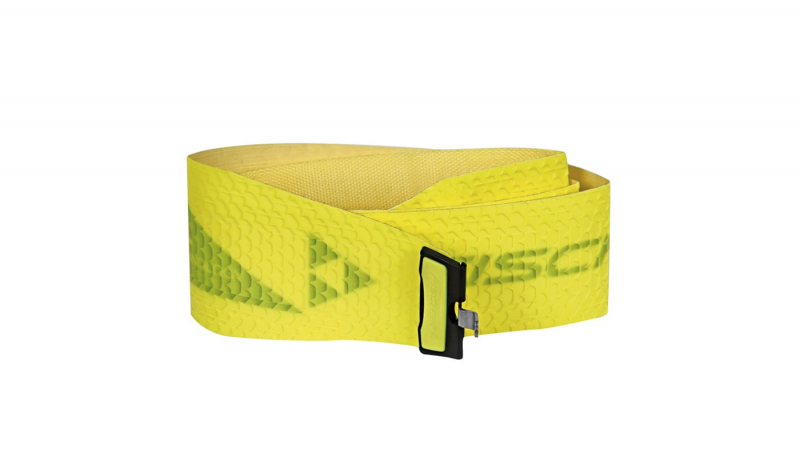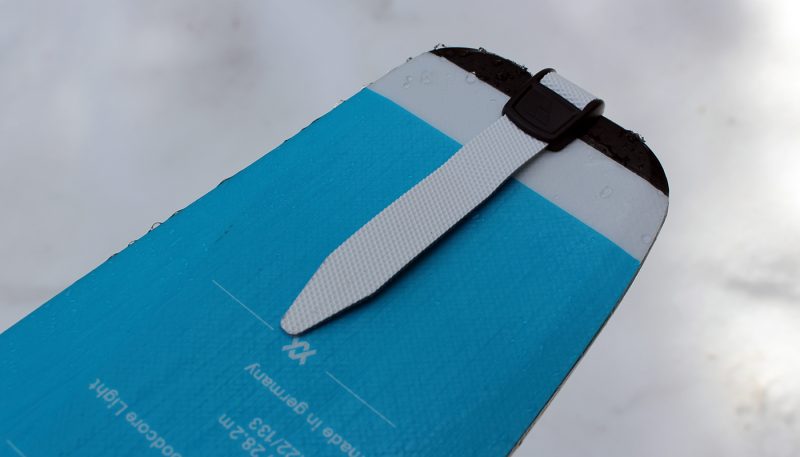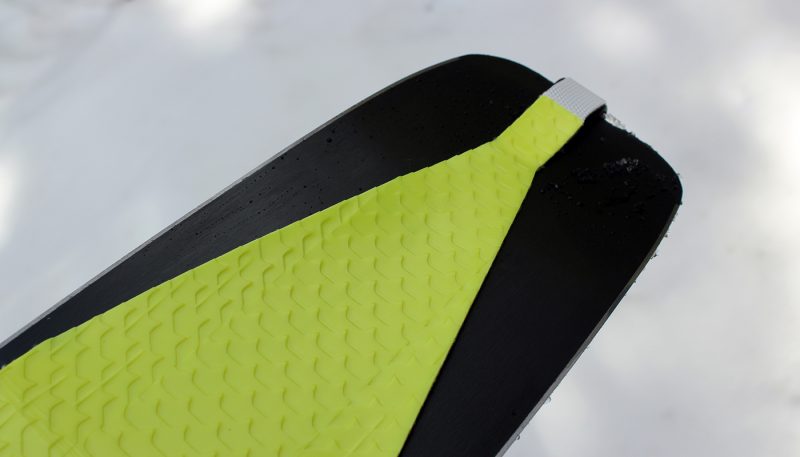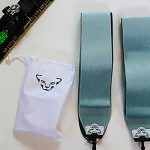Home » Gear Reviews » Ski & Snow » Climbing Skins » Fischer ProFoil
Fischer ProFoil Review
June 27, 2018





















 89
89 The Good
- Great traction & glide
- Peals from skis easily
- Packs down small & flat
- No moisture absorption on wet snow days
The Bad
- Must use separator to prevent glue on glue contact
- Squeaky on certain snow conditions
- Glue loses adhesion below 0F
- Snow migrates under the ProFoils at the folds
The Fischer ProFoil is technically not called a climbing skin, since it’s not made out of mohair, nylon, or even seal skin—like back in the day. The ProFoil’s textured plastic adheres to the base of your skis in the same fashion as a climbing skin, except instead of using hair the ProFoils use a textured pattern very similar to the fish scales found on the bottom of cross-country skis. Fischer developed the ProFoil based on the knowledge they’ve obtained from years of perfecting the technology used in their cross-country skis.
Since the ProFoils are not your traditional mohair or nylon climbing skin, they must be cared for differently. For starters, they are not folded glue on glue and then stored. Instead they are folded on top of themselves, glue against plastic, so separating them is much easier. The use of a separator sheet is mandatory as the glue cannot come in contact with the glue on the other skin, or they will be ruined.
Glide to Grip Ratio
Traditional nylon and mohair skins produce friction as they glide on snow. They collect snow and absorb water throughout warmer days which can add considerable weight. Alternatively, the ProFoil glides clean like a ski, thus avoiding “glopping”—the accumulation of snow on your skins when the weather turns warm and the snow gets wet.
Thanks to the low-friction coefficient of the ProFoil base material, allegedly you can lengthen your stride by up to 20%, which means improved efficiency and less energy output, though we didn’t really notice any difference. Their ability to glide better than traditional skins doesn’t sacrifice grip on the skin up either. Fischer’s “Crown Grip Technology” means the scales are arranged in a crown pattern (as opposed to a traditional perpendicular pattern) to maximize grip. The ProFoils also fit onto your skis better: Unlike traditional skins which leave the ski’s edge exposed, the ProFoils fit edge-to-edge to provide even more grip and glide.
Attachments
Initially ProFoils were only available in a pre-cut format for Fischer skis. In 2016, Fischer released the ProFoil in a variety of widths and lengths to accommodate other brands of skis. The tips now use a ‘cobra’ connector which is made of metal/plastic and is rather simple in nature. On the tail there is an ’i-clip’ connector, which is more traditional in its design and made entirely out of plastic. These more versatile connectors allow the ProFoils to be used on virtually any brand or type of ski. The only issue I have with the connectors is that the synthetic tail tends to slip through the tail clip over time; Because this releases tension, snow can creep under the skin causing build-up.
Glue Quality
The glue is a relatively low quality on the Fischer ProFoils, and at temperatures below -10°C (-4ºF), and after multiple applications, its adhesion qualities are challenged. When this happens, the snow begins to creep into the fold points along the ProFoils (as this is where the material is stressed from being stored in a folded configuration). On days where the mercury is at reasonable levels, the ProFoil glue works well and this has not been an issue.
Weight
With a weight of 563 grams (20 ounces), the Fischer ProFoils are neither heavy nor light. They fall right in the middle of the pack when it comes to weight. Given that they are made of plastic and not traditional skin material, I found they did feel lighter in my hand and on my skis.
Ease of Use
Overall, the Fischer ProFoils are fairly simple to use. Folding them for storage in quarters, with glue on plastic (rather than applying glue to glue like normal skins) is much more efficient in terms of speed while also requiring much less effort. The mandatory use of a separator sheet means additional care is required, but the sheet is only about 12” in length so it’s not a huge deal. Just don’t lose the separator sheet in the snow as its clear synthetic material is difficult to see in the snow.
Once the ProFoils are ready to attach to the skis, the tip and tail clips are easy to use. However, we had to be diligent in ensuring the ProFoils are properly attached at the fold points along the length of the ski to avoid snow build-up in between.
Brad Steele is the co-creator of BackcountrySkiingCanada.com, a one-stop-shop for skiers and riders seeking timely, on-the-money information. BackcountrySkiingCanada.com is where you’ll find route descriptions, product reviews, guides, videos, comps and other like minded people who are as amped on ski touring as you are.



















No reviews have been posted for this product.
Use this gear?
Join Gear Nation and leave a review!
Create an Account